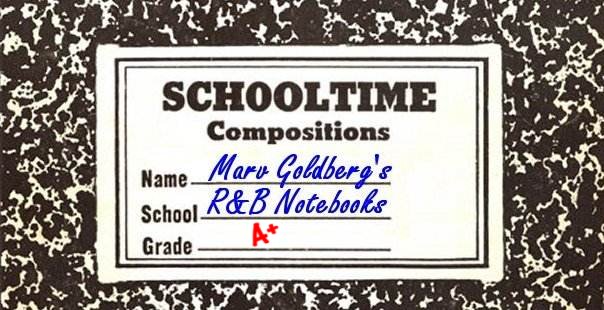
The Platters
For Their Induction To The
Rock And Roll Hall Of Fame
By Marv Goldberg

AUTHOR'S NOTE: Hardly an in-depth article, this was written for the 1990 induction of the Platters into the Rock And Roll Hall Of Fame. It appeared in that year's booklet. Some of it wasn't even very accurate, so be sure to read the main article.
In the musical spectrum of the 50s, the Platters stood solidly and proudly in the middle. Like the Ink Spots a decade earlier, the Platters were the most successful black group of their time, and like the Ink Spots, they gained broad-based acceptance only after leaving their roots behind to forge their own distinctive style.
The Platters started in late 1952 as a loose aggregation of Los Angeles teenagers. Present at the outset were Cornell Gunter, Gaynel Hodge, his brother Alex, Joe Jefferson, and Curtis Williams. Members came and went, and by the time of their first recording session, the Platters included the Hodge brothers, David Lynch, Herb Reed and Tony Williams.
Lacking direction, they turned to Buck Ram, who would be the Platters' guiding light for the length of their recording career. Ram had earned a law degree to please his parents, then immediately switched to music, writing and arranging for many acts, including the Ink Spots, during the Forties. Soon after he agreed to manage the Platters in 1953, a recording deal was struck with Federal. After three unremarkable sessions, he recruited Zola Taylor, the girlfriend of the departing Gaynel Hodge, and by the time the Platters left Federal, Paul Robi had replaced Alex Hodge. Still without a hit, the Platters had two solid assets: a line-up that would remain intact for the rest of the decade and Ram's vision of their potential for success far beyond the world of Rhythm & Blues.
At the time, Ram also managed another aspiring vocal group, the Penguins. The success of their recording of "Earth Angel" in late 1954 gave Ram the leverage he needed. Mercury was eager to sign the Penguins, but Ram insisted the label also take the Platters. Mercury reluctantly agreed, merely to be rewarded by a string of hits. "Only You," the first, took nearly five months to hit the charts but rose at last to #5. Then came four #1 hits - "The Great Pretender," "My Prayer," "Twilight Time," "Smoke Gets in Your Eyes," and "The Magic Touch," which reached #4.
What were the secrets of this remarkable success? The Platters' sound was crisp and clear and, above all, understandable. They specialized in adult ballads and soulful renditions of pre-rock standards. Their lush harmonies were framed by string-laden arrangements and benefited from Mercury's state-of-the-art recording technology.
Between 1955 and 1960, the Platters toured the world - Mercury dubbed them "the international ambassadors of musical good will." In addition, the Platters probably appeared in more motion pictures than any other group of the 50s: Rock Around the Clock, The Girl Cant Help It, Carnival Rock and Girl's Town.
Then, in 1960, Williams departed to pursue a solo career. Eventually, he and his wife, Helen, would form the New Platters. Taylor left in 1964, followed the next year by Lynch and Robi; these three formed the Original Platters in the mid-60s. Reed remained with the Buck Ram Platters until 1969, when he too left to form his own group.
Lead vocal chores in the Buck Ram Platters fell to Sonny Turner throughout the 60s. Nate Nelson, the golden voice of the Flamingos, joined in 1965. After leaving Mercury for Musicor in 1966, the Platters scored their biggest hit of the 60s: the uptempo "With This Ring," which remains a favorite on the Carolina Beaches.
In 1970, Monroe Powell, formerly of Billy Ward's Dominoes, became lead singer, continuing for more than ten years to front a group whose sound had long retained its power to evoke the memory of an age.